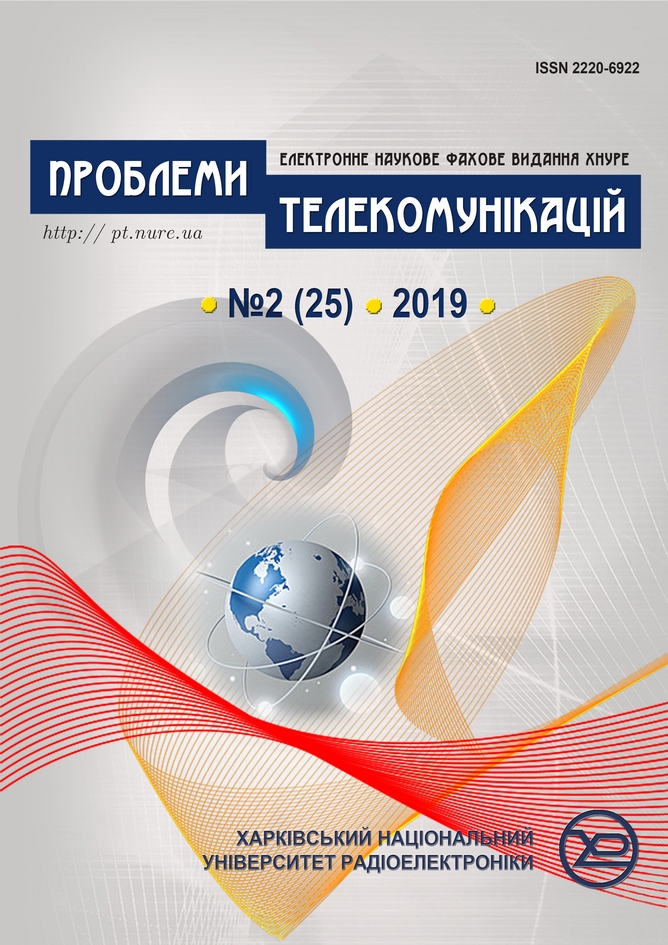The voice tone frequency estimate of the user authentication system
DOI:
https://doi.org/10.30837/pt.2019.2.07Keywords:
Frequency, Authentication, Signal, Voice, Phase, ToneAbstract
The directions for improving the quality characteristics of voice authentication systems in different access systems are analyzed and investigated in the article. One of the main areas of enhancing the quality characteristics of these user authentication systems is related to the use of phase information of the voice signal. The object of the study is the process of digital signal processing in voice authentication systems. The relevant scientific task of investigating new procedures to refine estimates of pitch frequency obtained on the basis of the analysis of the amplitude-frequency spectrum is solved. The estimates were refined based on the use of phase data of a voice signal, as well as the estimation of the pitch frequency in the process of obtaining kepstral coefficients. The purpose of this work is to investigate the effect of phase data on the accuracy of estimating the pitch frequency in the process of forming a user pattern. The results have been obtained in the process of statistical analysis of the simulation results using model and experimental voice data of the user authentication system. The phase data of the voice signal allow to obtain adequate and reliable estimates in the process of spectral analysis. However, in the presence of errors associated with gross errors, such as the acceptance of the pitch of the frequencies of the first or second formants, preference should be given to the estimate obtained in the process of calculating kepstral coefficients. The influence of sample length and their overlap in the process of calculating kepstral coefficients is investigated. The presented research results should be used in voice authentication systems, improvement of speech recognition systems, as well as in solving problems of speaker identification.References
Рамишвили Г.С. Автоматическое опознавание говорящего по голосу. М: Радио и связь, 1981. 224 с.
Beigi H. Fundamentals of Speaker Recognition. NY: Springer, 2011. 1029 p.
ISO/IEC 2382-37:2012 Information technology – Vocabulary – Part 37: Biometrics. URL: https://www.iso.org/ru/standard/55194.html
Болл Р.М., Коннел Дж. Х., Панканти Ш., Ратха Н.К., Сеньор Э.У. Руководство по биометрии. М.: Техносфера, 2007. 368 с.
Oppenheim A.V., Lim J.S. The Importance of Phase in Signals: Article in Proceeding of the IEEE, 1981. № 69(5). P. 529-541.
Paliwal K. Usefulness of phase in speech processing. Proc. IPSJ Spoken Language Processing Workshop, Gifu, Japan, Feb. 2003. P. 1-6.
Paliwal K., Atal B. Frequency-related representation of speech. In: Proceedings of the European Conference on Speech Communication and Technology (EUROSPEECH-2003), 2003. P. 65–68.
Борисенко С.Ю., Воробьев В.И., Давыдов А.Г. Сравнение некоторых способов анализа фазовых соотношений между квазигармоническими составляющими речевых сигналов. Сборник трудов 1-ой Всероссийской акустической конференции. 2004. С. 2-7.
Wu Z. , Kinnunen T., Chng E., Li H., Ambikairajah E. A study on spoofing attack in state-of-the-art speaker verification: the telephone speech case. In Proceedings of The 2012 Asia Pacific Signal and Information Processing Association Annual Summit and Conference. IEEE, 2012. Р. 1-5.
Пастушенко Н.С., Педро В.Г., Файзулаева О.Н. Исследование информативности фазовых данных голосового сигнала пользователя системы аутентификации. Проблеми телекомунікацій. 2018. №1(22). С. 67-74. URL: http://pt.journal.kh.ua/2018/181_pastushenko_voice.pdf.
Gerhard D. Pitch extraction and fundamental frequency: History and current techniques. Regina, Canada: Department of Computer Science, University of Regina. 2003. 22 p. URL: http://citeseerx.ist.psu.edu/viewdoc/download?doi=10.1.1.58.834&rep=rep1&type=pdf
Downloads
Published
Issue
Section
License
Copyright (c) 2019 Yehor Kutsenko, Mykola Pastushenko

This work is licensed under a Creative Commons Attribution-NonCommercial-ShareAlike 4.0 International License.
Authors who publish with this journal agree to the following terms:- Authors retain copyright and grant the journal right of first publication with the work simultaneously licensed under a Creative Commons Attribution License that allows others to share the work with an acknowledgment of the work's authorship and initial publication in this journal.
- Authors are able to enter into separate, additional contractual arrangements for the non-exclusive distribution of the journal's published version of the work (e.g., post it to an institutional repository or publish it in a book), with an acknowledgment of its initial publication in this journal.
- Authors are permitted and encouraged to post their work online (e.g., in institutional repositories or on their website) prior to and during the submission process, as it can lead to productive exchanges, as well as earlier and greater citation of published work (See The Effect of Open Access).

